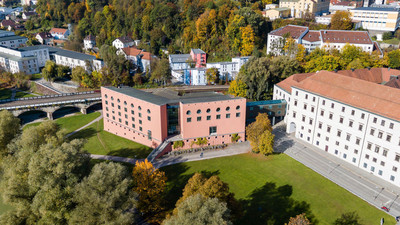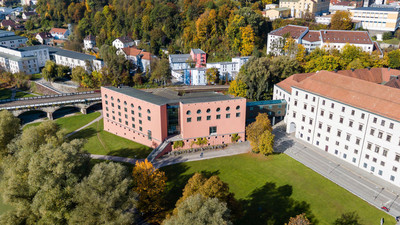In their article Urban house price surfaces near a World Heritage Site: Modeling conditional price and spatial heterogeneity, Markus Fritsch, Harry Haupt and Pin Tian Ng proposed a statistical technique using price data from the rental housing market in Regensburg, southern Germany. The new technique makes it possible to flexibly model the effects of structural characteristics and location on property price. The authors found empirical evidence of complex and economically significant location effects on prices as well as differing levels of structural and spatial price effects within the lower, middle and upper price segments.
'In Regensburg, the complexity of spatial patterns in housing prices, which cannot be captured with traditional methods, occurs mainly in those areas that were declared part of a UNESCO World Heritage Site in 2006: the historic Old Town and the Stadtamhof district', said Professor Haupt. 'In these areas there was a strongly positive effect on rent per square metre brought about exclusively by the [properties'] physical location, since many other price-relevant characteristics had already been accounted for. In essence, modelling allows us to capture price differences between arbitrary locations in the town centre, even those that were not part of the sample.' According to Markus Fritsch, these spatial price effects change with increasing distance from the World Heritage Site; moreover, the rate of change is strongly dependent on the geographic direction.
To a layperson, the description of the statistical-methodological core of the research project is somewhat enigmatic: 'a semiparametric quantile regression model based on additively-linked smoothing splines'. Professor Haupt explained: 'This technique allows us to model rents directly within individual price segments while flexibly mapping influencing factors. It may be possible that there are "non-linear relations" between the rent charged for a property and its physical characteristics, such as the size or age of the building or its geographic location. A prime example of a non-linear relation are declining rental prices per square metre with increasing property sizes.' The main advantage of the new technique is that the interrelationship of the characteristics of rental properties in different price segments can be modelled directly: This makes it possible to infer the influence of physical and spatial characteristics on the rental value across price segments, even in the case of separate buildings with a very different set of characteristics.
About the authors
Markus Fritsch studied Business Administration and Economics at the University of Passau and San Diego State University. He is currently working as a doctoral researcher at the Chair of Statistics of the University of Passau. Professor Harry Haupt holds the Chair of Statistics and is the incumbent Vice President for Research of the University of Passau; moreover, he heads the Statistical Theory and Methods Section of the German Statistical Society. Pin Tian Ng is a Full Professor of Economics at Northern Arizona University, USA, and a Visiting Professor at Anhui University in China.
Link to the journal article: http://dx.doi.org/10.1016/j.regsciurbeco.2016.07.011










